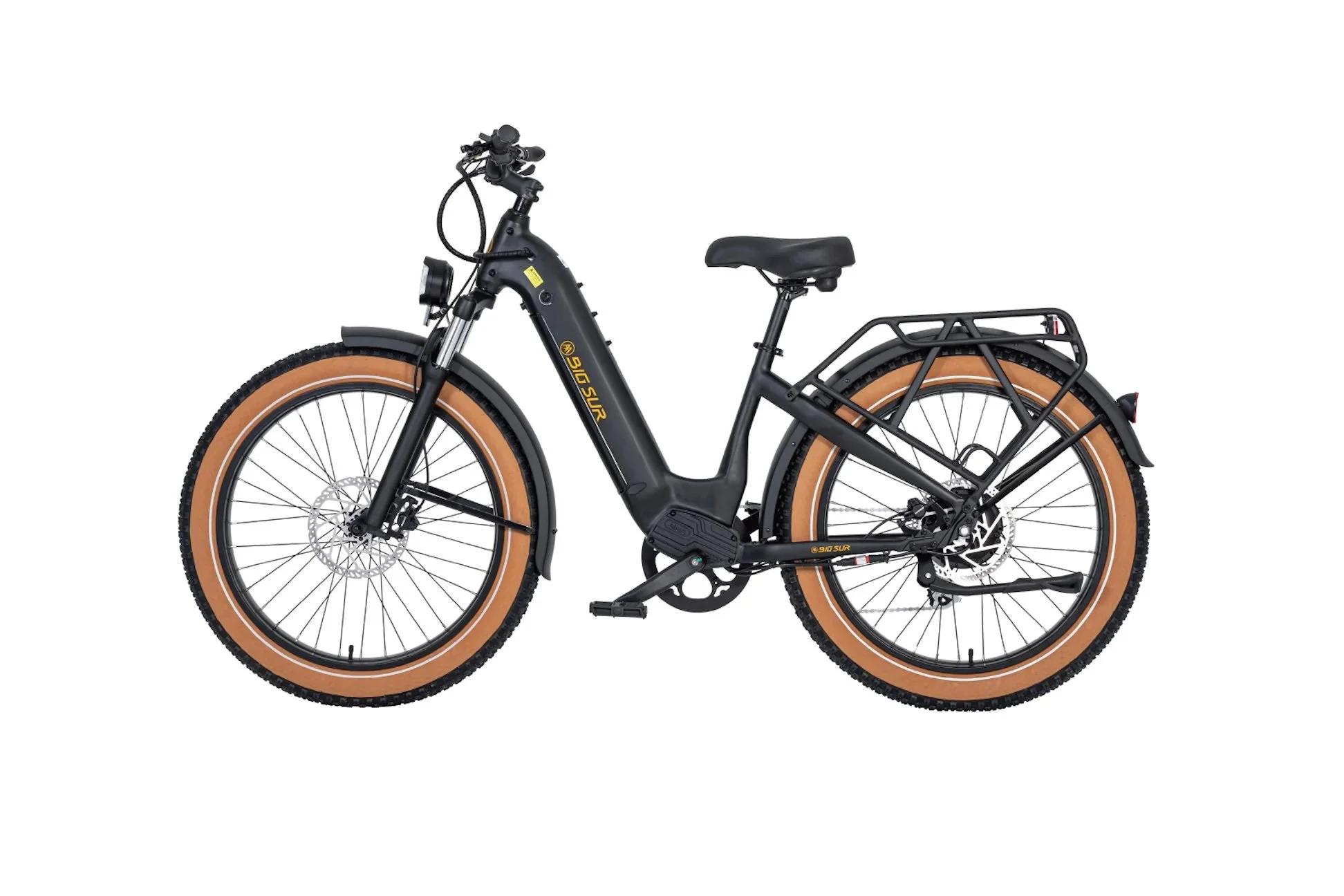 Image 1 of 19
Image 1 of 19

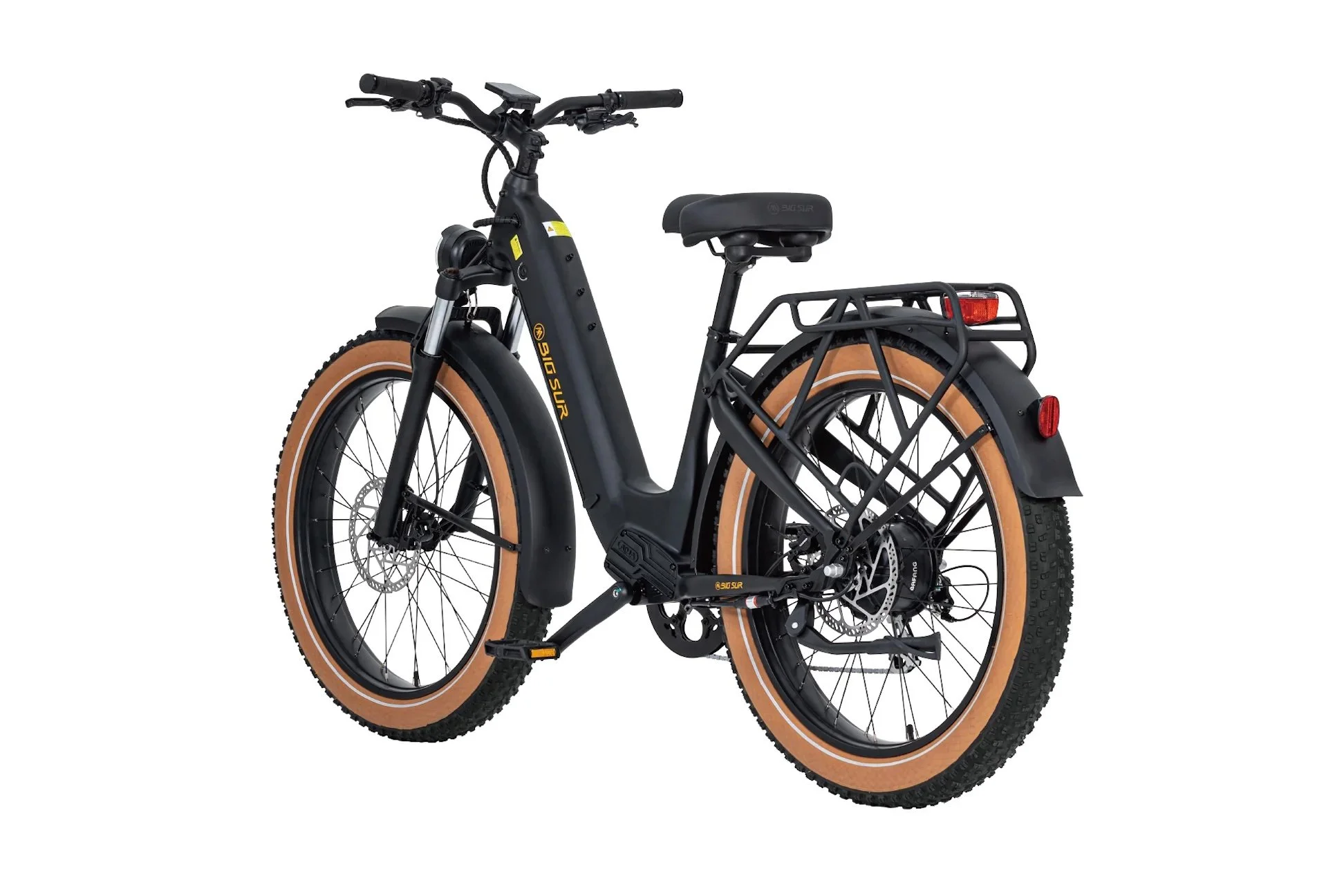 Image 2 of 19
Image 2 of 19

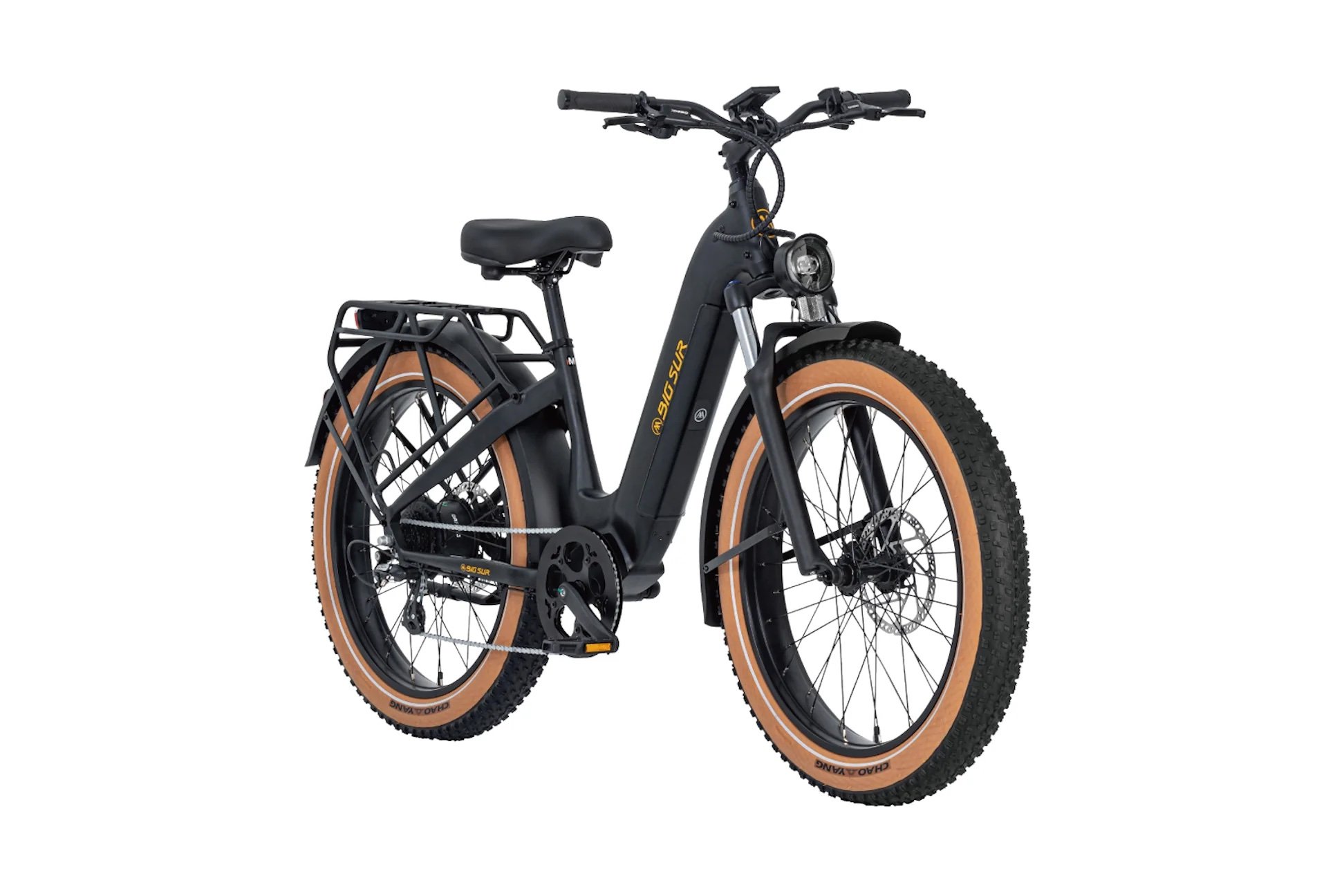 Image 3 of 19
Image 3 of 19

 Image 4 of 19
Image 4 of 19

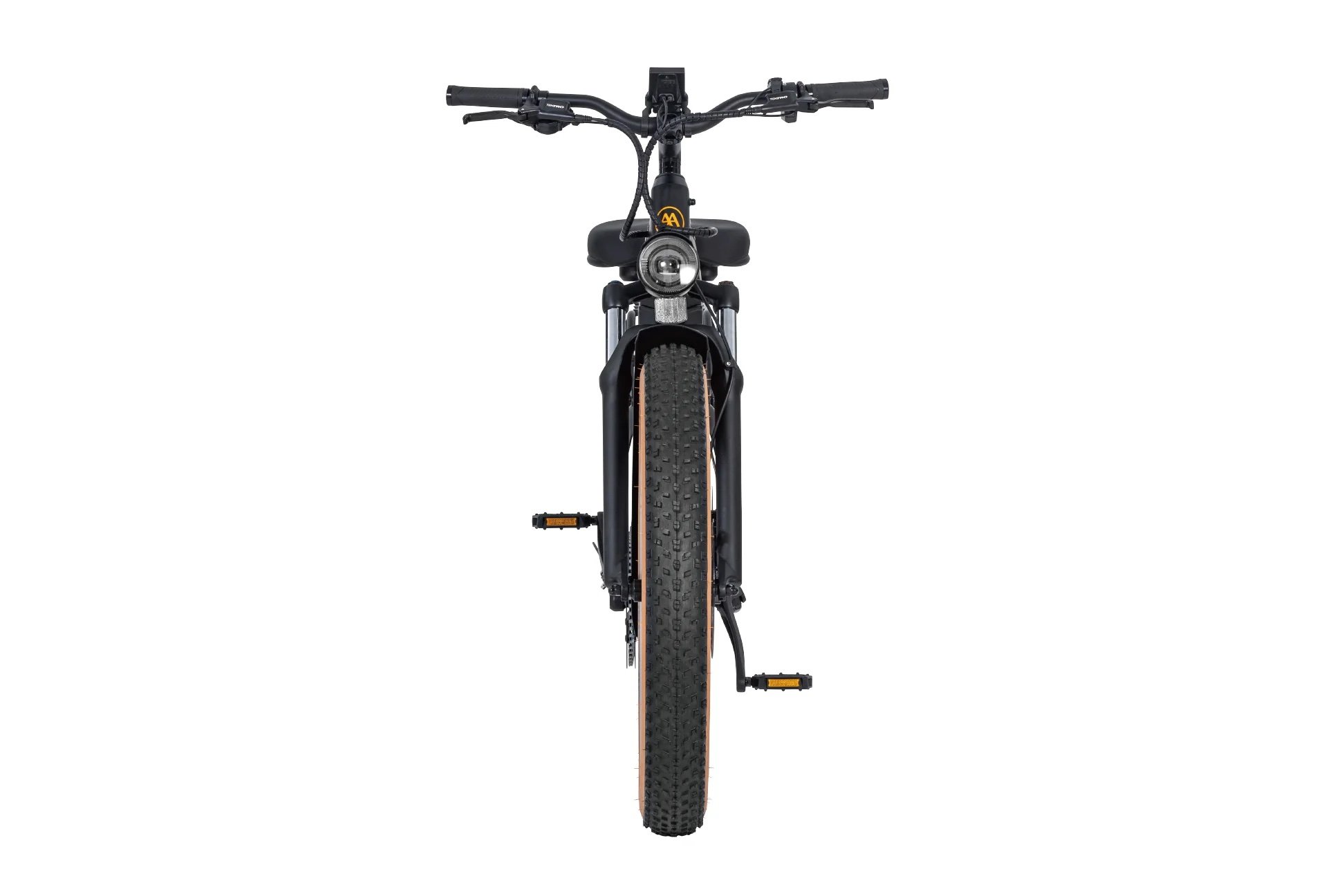 Image 5 of 19
Image 5 of 19

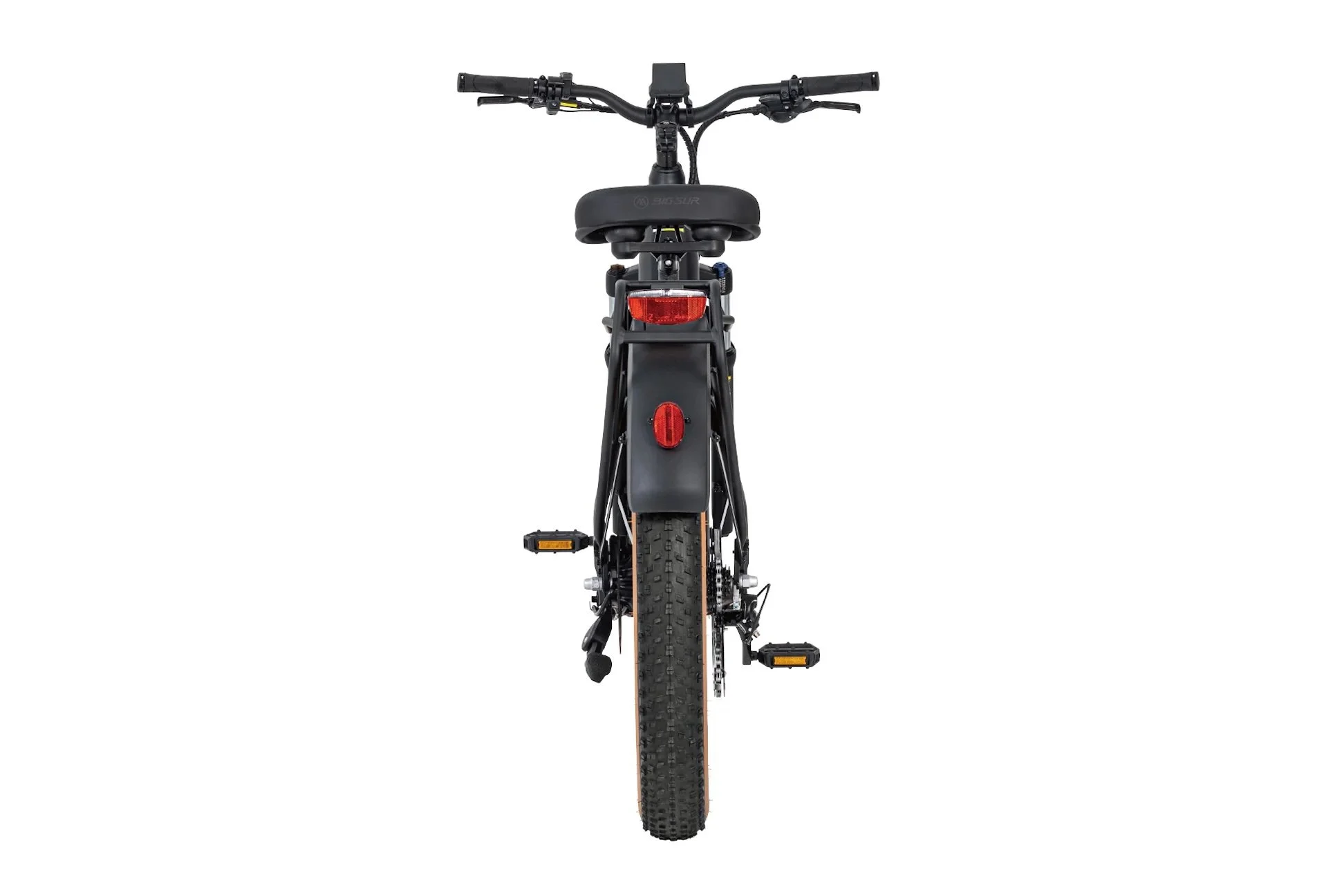 Image 6 of 19
Image 6 of 19

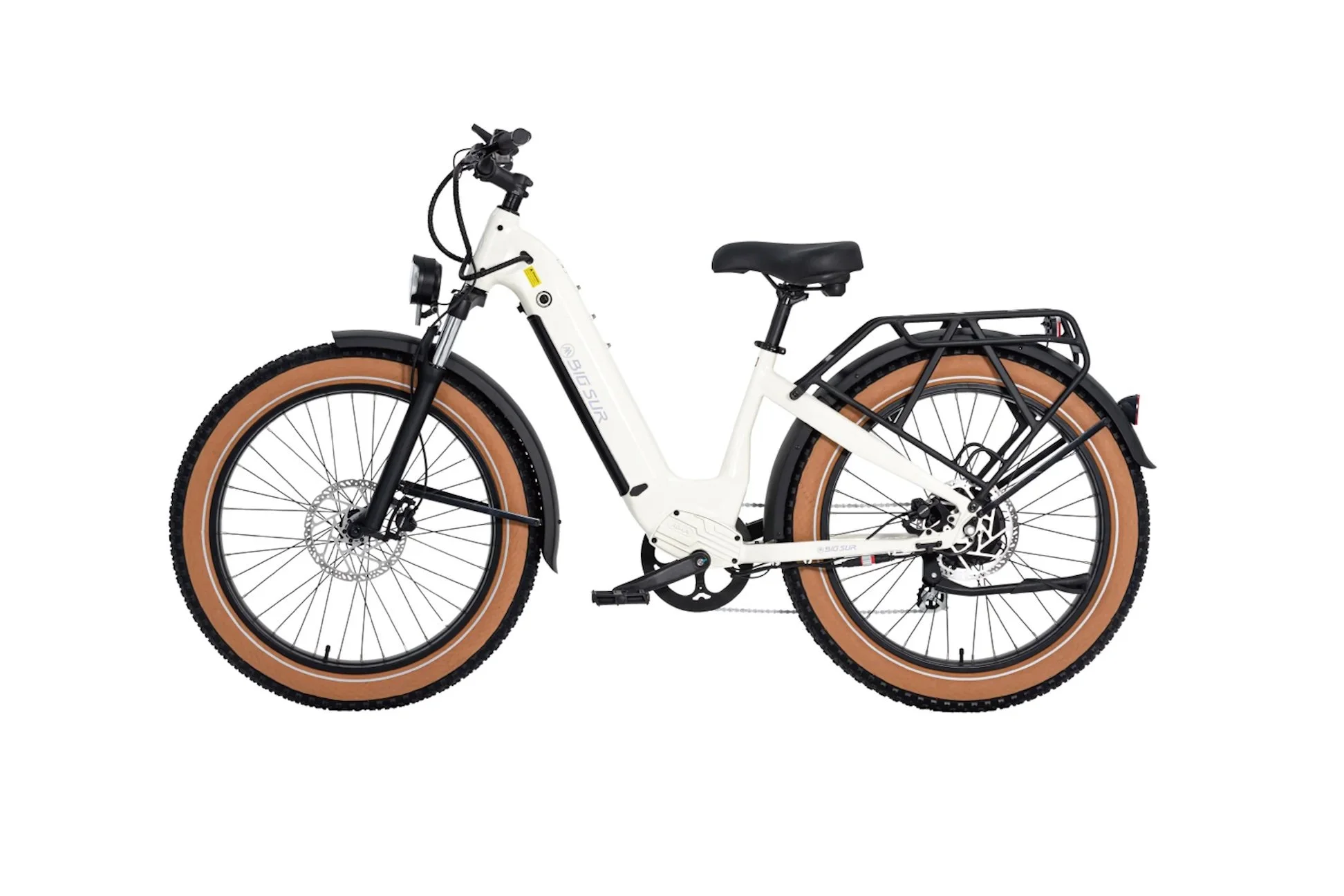 Image 7 of 19
Image 7 of 19

 Image 8 of 19
Image 8 of 19

 Image 9 of 19
Image 9 of 19

 Image 10 of 19
Image 10 of 19

 Image 11 of 19
Image 11 of 19

 Image 12 of 19
Image 12 of 19

 Image 13 of 19
Image 13 of 19

 Image 14 of 19
Image 14 of 19

 Image 15 of 19
Image 15 of 19

 Image 16 of 19
Image 16 of 19

 Image 17 of 19
Image 17 of 19

 Image 18 of 19
Image 18 of 19

 Image 19 of 19
Image 19 of 19




















Aima Big Sur 26" Ebike
Big Sur is a 26 x 4” fat tire all-terrain e-bike, equipped with a powerful 750W Bafang rear hub motor. Big Sur is Class 2/3, meaning it'll take you up to 20mph using the throttle, and 28mph while pedaling. A specially-designed big headlight, extra-large 203mm brake rotors, LG 21700 battery cells, and a full UL2849 certification make Big Sur one of the safest e-bikes on the market. Sporting a bigger 52T crankset for stability at speed and a custom AIMA Comfort XL seat, Big Sur provides riders with a remarkably comfortable and smooth riding experience.
Technical Specifications
MODEL
Big Sur
MOTOR
750W (Rated) / 1200W (Peak) , 48V Brushless Rear Hub Motor
THROTTLE
Throttle on Demand
DISPLAY
Color LCD, Smart Easy-to-Read Display with Backlight
SPEED
Up to 28 MPH Pedal Assist, 20 MPH Throttle Only
BATTERY
Removable Internal Lithium-ion 48V, 15Ah (720Wh) with LG M50LT 21700 cells
REAR RACK
MIK HD
SENSORS
Torque Sensor
PEDAL ASSIST
5 Levels
CHARGER
48V 3 Amp Fast Charger, about 5 Hours to a Full Charge
RANGE
Up to 60 Miles
FRAME
6061 Single-Butted Aluminum Alloy Frame with Internal Battery
WEIGHT
82 lbs. ( Battery included)
PEDALS
9/16' Alloy Platform
FORK
Suspension Fork with 80mm travel, with lockout
WEIGHT LIMIT
400 lbs.
KICKSTAND
Included, Aluminum Alloy Kickstand
CRANKSET
170mm w/ 52T
SHIFT
Shimano 8 Speed
GEAR RATIO RANGE
11-34T
BRAKES
Tektro E350 Hydraulic Disc Brakes
ROTOR
203 mm
CHAIN
130 Link, 8 Speed
RIM
Double Wall Aluminum Alloy
SPOKES
Black Stainless 12G Front / 12G Rear
TUBES
Butyl Rubber
HUBS
Front Aluminum Alloy Disc Hub
TIRES
26" x 4" Puncture Resistant
SADDLE
AIMA Comfort, 280mm*270mm Saddle
SEATPOST
Aluminum Alloy, 30.4mm 2-Bolt Clamp
STEM
Threadless, 31.8mm, 7 Degree Rise, Ext 75mm
SEAT CLAMP
34.9 mm Quick Release
HANDLEBARS
Aluminum Alloy Double Wall, 31.8mm, 680mm
HEADSET
Sealed Bearing Headset
GRIPS
Ergonomic Comfort
*Ebike Range: Explained
An e-bike's battery life is influenced by several factors that can affect its maximum range. While our e-bikes can achieve up to 60 miles of range under ideal riding conditions, range figures can drop below 40 or even 30 miles without keeping these factors in mind. Here's a list of the most common factors that affect range, as well as what you can do to maximize your riding time.
Pedal Assist: Higher levels of pedal assist will allow for an easier ride, but will also draw more power from the battery. Lower assist levels are better for getting as many miles as possible out of your battery.
Average Cruising Speed: Riding slower will decrease the amount of energy you lose to wind resistance as the bike pushes you forwards through the air. Slower speeds will extend battery life.
Tire Pressure: Fat tire bikes like Big Sur and Big Sur Sport can have their tires aired down beneath the pressure rating listed on the tire for better off-road performance, but this will lead to a increase in rolling resistance, and running too low of a pressure could raise your chances of a tube failure. For most riding situations, pumping up your tires every week or two to the recommended pressure shown on the side of the tire will keep your ride safe and energy-efficient.
Load Weight: This includes both the rider's weight and the weight of any cargo you may be carrying. More weight will take more time and energy to get up to speed, negatively affecting your range. It's best to keep loads light whenever possible if you're looking to extend your range.
Terrain & Elevation: In general, riding over smooth terrain with few to no changes in elevation will give you a longer range. Hills and rough terrain can greatly impact your maximum range, especially on higher assist levels.
Wind: Wind resistance is generated as you ride through the air, but it can also be generated by, well, the wind! Riding in heavy winds, especially if it's a constant headwind, will lead to a decrease in range. However, if you can catch a tailwind, you may actually be able to steal a bit of range back, as the wind would be traveling in the same direction as you are, effectively cancelling out any wind resistance you would generate on your own.
Ambient Temperature: Riding in cold weather will impact the battery's ability to function optimally, sometimes a lot more than you might think. This is a limitation imposed by the chemistry that allows our current battery tech to work. A good rule of thumb is, if you're comfortable (temperature-wise), then the battery is comfortable too. This also goes for storing the battery if you won't be riding for an extended period of time, which leads to:
Battery Condition, Care, & Storage: As you use your e-bike's battery, its effective range will diminish over time. This is again a consequence of the Li-ion technology that powers many of our devices today, including mobile phones, laptops, electric cars, and of course, e-bikes. Li-ion batteries traditionally experience a noticeable drop in total capacity after several years of continuous use, which isn't a concern for brand-new e-bikes, but it's something to keep in mind as your e-bike ages. The battery cells that make up an e-bike battery pack like to be kept between 20% and 80% charge, and keeping the battery in this range as best as you can will prolong the battery's total lifespan.
However, if you ride frequently and/or if you ride long distances, charging to 100% is still more than safe. The Bafang battery that our bikes utilize will automatically stop charging at less than 4.2V per cell, greatly reducing the usual wear caused by fully charging the battery pack. Think of this feature as an extra level of battery capacity protection that prevents each individual cell in the battery pack from reaching its own max charge level. This means that in exchange for less than 5% of the pack's total range potential, you'll be able to retain more total battery capacity for longer compared to if the battery cells were allowed to reach their absolute maximum charge levels every time.
This practice is already commonplace in the EV industry, and it's finding its way into the PEV (personal electric vehicle) industry in e-bikes, e-scooters, and many more e-things because of the huge increase in battery lifespan it provides. Traditionally, Li-ion batteries can lose up to ~20% capacity after several years of continuous use, but this technique of limiting the battery's max charge level aims to bring that percentage down considerably.
Additionally, as mentioned above, if you'll be storing your bike without riding it for a long time (more than a month), it's best to remove the battery and keep it inside as opposed to in a garage or attic, where temperatures can fluctuate much more than what you'd see inside. If you're going to store your battery, try to charge (or discharge) it to as close to 50% charge as possible first, which is where the battery likes to sit if it won't be used for a while. Keeping the battery near 50% will minimize the degradation it undergoes during storage.
Big Sur is a 26 x 4” fat tire all-terrain e-bike, equipped with a powerful 750W Bafang rear hub motor. Big Sur is Class 2/3, meaning it'll take you up to 20mph using the throttle, and 28mph while pedaling. A specially-designed big headlight, extra-large 203mm brake rotors, LG 21700 battery cells, and a full UL2849 certification make Big Sur one of the safest e-bikes on the market. Sporting a bigger 52T crankset for stability at speed and a custom AIMA Comfort XL seat, Big Sur provides riders with a remarkably comfortable and smooth riding experience.
Technical Specifications
MODEL
Big Sur
MOTOR
750W (Rated) / 1200W (Peak) , 48V Brushless Rear Hub Motor
THROTTLE
Throttle on Demand
DISPLAY
Color LCD, Smart Easy-to-Read Display with Backlight
SPEED
Up to 28 MPH Pedal Assist, 20 MPH Throttle Only
BATTERY
Removable Internal Lithium-ion 48V, 15Ah (720Wh) with LG M50LT 21700 cells
REAR RACK
MIK HD
SENSORS
Torque Sensor
PEDAL ASSIST
5 Levels
CHARGER
48V 3 Amp Fast Charger, about 5 Hours to a Full Charge
RANGE
Up to 60 Miles
FRAME
6061 Single-Butted Aluminum Alloy Frame with Internal Battery
WEIGHT
82 lbs. ( Battery included)
PEDALS
9/16' Alloy Platform
FORK
Suspension Fork with 80mm travel, with lockout
WEIGHT LIMIT
400 lbs.
KICKSTAND
Included, Aluminum Alloy Kickstand
CRANKSET
170mm w/ 52T
SHIFT
Shimano 8 Speed
GEAR RATIO RANGE
11-34T
BRAKES
Tektro E350 Hydraulic Disc Brakes
ROTOR
203 mm
CHAIN
130 Link, 8 Speed
RIM
Double Wall Aluminum Alloy
SPOKES
Black Stainless 12G Front / 12G Rear
TUBES
Butyl Rubber
HUBS
Front Aluminum Alloy Disc Hub
TIRES
26" x 4" Puncture Resistant
SADDLE
AIMA Comfort, 280mm*270mm Saddle
SEATPOST
Aluminum Alloy, 30.4mm 2-Bolt Clamp
STEM
Threadless, 31.8mm, 7 Degree Rise, Ext 75mm
SEAT CLAMP
34.9 mm Quick Release
HANDLEBARS
Aluminum Alloy Double Wall, 31.8mm, 680mm
HEADSET
Sealed Bearing Headset
GRIPS
Ergonomic Comfort
*Ebike Range: Explained
An e-bike's battery life is influenced by several factors that can affect its maximum range. While our e-bikes can achieve up to 60 miles of range under ideal riding conditions, range figures can drop below 40 or even 30 miles without keeping these factors in mind. Here's a list of the most common factors that affect range, as well as what you can do to maximize your riding time.
Pedal Assist: Higher levels of pedal assist will allow for an easier ride, but will also draw more power from the battery. Lower assist levels are better for getting as many miles as possible out of your battery.
Average Cruising Speed: Riding slower will decrease the amount of energy you lose to wind resistance as the bike pushes you forwards through the air. Slower speeds will extend battery life.
Tire Pressure: Fat tire bikes like Big Sur and Big Sur Sport can have their tires aired down beneath the pressure rating listed on the tire for better off-road performance, but this will lead to a increase in rolling resistance, and running too low of a pressure could raise your chances of a tube failure. For most riding situations, pumping up your tires every week or two to the recommended pressure shown on the side of the tire will keep your ride safe and energy-efficient.
Load Weight: This includes both the rider's weight and the weight of any cargo you may be carrying. More weight will take more time and energy to get up to speed, negatively affecting your range. It's best to keep loads light whenever possible if you're looking to extend your range.
Terrain & Elevation: In general, riding over smooth terrain with few to no changes in elevation will give you a longer range. Hills and rough terrain can greatly impact your maximum range, especially on higher assist levels.
Wind: Wind resistance is generated as you ride through the air, but it can also be generated by, well, the wind! Riding in heavy winds, especially if it's a constant headwind, will lead to a decrease in range. However, if you can catch a tailwind, you may actually be able to steal a bit of range back, as the wind would be traveling in the same direction as you are, effectively cancelling out any wind resistance you would generate on your own.
Ambient Temperature: Riding in cold weather will impact the battery's ability to function optimally, sometimes a lot more than you might think. This is a limitation imposed by the chemistry that allows our current battery tech to work. A good rule of thumb is, if you're comfortable (temperature-wise), then the battery is comfortable too. This also goes for storing the battery if you won't be riding for an extended period of time, which leads to:
Battery Condition, Care, & Storage: As you use your e-bike's battery, its effective range will diminish over time. This is again a consequence of the Li-ion technology that powers many of our devices today, including mobile phones, laptops, electric cars, and of course, e-bikes. Li-ion batteries traditionally experience a noticeable drop in total capacity after several years of continuous use, which isn't a concern for brand-new e-bikes, but it's something to keep in mind as your e-bike ages. The battery cells that make up an e-bike battery pack like to be kept between 20% and 80% charge, and keeping the battery in this range as best as you can will prolong the battery's total lifespan.
However, if you ride frequently and/or if you ride long distances, charging to 100% is still more than safe. The Bafang battery that our bikes utilize will automatically stop charging at less than 4.2V per cell, greatly reducing the usual wear caused by fully charging the battery pack. Think of this feature as an extra level of battery capacity protection that prevents each individual cell in the battery pack from reaching its own max charge level. This means that in exchange for less than 5% of the pack's total range potential, you'll be able to retain more total battery capacity for longer compared to if the battery cells were allowed to reach their absolute maximum charge levels every time.
This practice is already commonplace in the EV industry, and it's finding its way into the PEV (personal electric vehicle) industry in e-bikes, e-scooters, and many more e-things because of the huge increase in battery lifespan it provides. Traditionally, Li-ion batteries can lose up to ~20% capacity after several years of continuous use, but this technique of limiting the battery's max charge level aims to bring that percentage down considerably.
Additionally, as mentioned above, if you'll be storing your bike without riding it for a long time (more than a month), it's best to remove the battery and keep it inside as opposed to in a garage or attic, where temperatures can fluctuate much more than what you'd see inside. If you're going to store your battery, try to charge (or discharge) it to as close to 50% charge as possible first, which is where the battery likes to sit if it won't be used for a while. Keeping the battery near 50% will minimize the degradation it undergoes during storage.
















